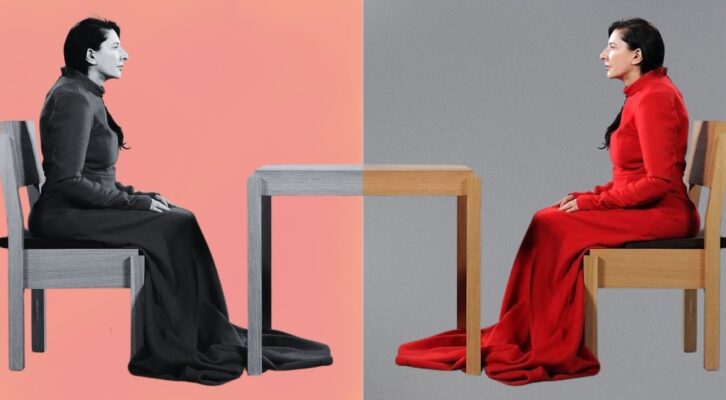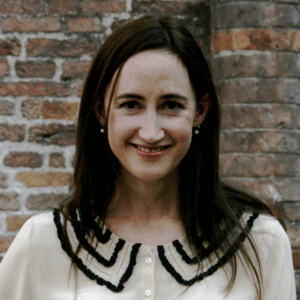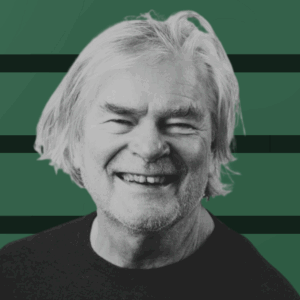
On Marina Abramović and the Radical Notion of the Third Act
Ellen O’Connell Whittet Considers the Long Life of Art
For most of my childhood, I felt a ticking clock inside me—counting down the end of my dance career before it had even begun. My parents, adamant that I go to college instead of pursuing ballet professionally, asked me what I would do if I got injured, or burned out, or when I inevitably aged out, with no degree to fall back on. At seventeen, I rolled my eyes. Injury and burnout were adult problems, far from my adolescent horizon.
But by my freshman year of college, where I declared a dance major and spent every waking hour in rehearsal or class, I found myself both injured and burned out. By twenty, I had switched majors, transferred schools, and quit dancing. I’d spent my childhood rehearsing for a career that ended just as I crested a new decade.
I still miss performing almost two decades later, not for the applause or the costumes, but for the way it demanded every cell of my body pay attention. I couldn’t think about the past or fret over the future when adrenaline was flooding my system and a hundred eyes were fixed on me. It was one of the only times in my life when I felt fully alive inside the moment I was in.
In 2010, not long after I had stopped dancing, I saw The Artist is Present at the Museum of Modern Art. Marina Abramović, then 63, sat silently in the museum’s atrium for eight hours a day over three months. Visitors took turns sitting across from her, locking eyes. I was in graduate school by then, having thrown myself into writing with the same intensity I’d once reserved for ballet. And yet I walked into MoMA already feeling washed up, already wondering if the moment to make art had passed me by.
Then I saw Abramović. Young artists performed five of her previous pieces in the museum too, but her presence, and her new performance, were far and away the most exciting parts of her retrospective. She wasn’t there reflecting on a past era or celebrating her legacy—she was in the thick of it, performing new work with a physical and spiritual stamina that eclipsed anything I’d felt at twenty. I went back again and again, dragging friends, my parents, sometimes going alone. I squeezed through the two naked performers forming a human passageway and sat on the ground until I went numb, just to witness her performance. Abramović showed me that an art career doesn’t have to diminish with age—in fact, it can deepen.
In the 2012 documentary about the performance, she says she is in the “third act” of her life, which, she believes, is when things get most interesting. It was the first time I considered that a life in art could be something more than a sprint to a young peak. That maybe, with enough discipline, it could be a long, strange pilgrimage.
Of course, Abramović has spent much of her life testing the outer limits of discipline. Her notorious 1974 performance Rhythm 0 invited audience members to use 72 objects on her body—ranging from a feather to a loaded gun. In that piece and many others, she sacrificed comfort, control, and safety in service of transformation. And yet she is still here, still performing. That was the revelation. She hadn’t just survived these extremes—she had continued evolving through them. When I saw her speak recently, she said as a young artist she was death-obsessed, and now she’s life-obsessed.
Now, at 78, Abramović is reimagining artistic longevity once more. Her newest endeavor is the Marina Abramović Longevity Method, a hybrid of performance art, ritual, and wellness she launched last year. It’s part discipline, part spiritual detox, and part conceptual score. Participants are encouraged to walk backwards with a mirror or spend hours—literally—opening and closing a door. There are prescribed baths with kosher salt or vinegar, and a general withdrawal from technology. It’s a kind of monastic retreat in performance-art drag.
Her website is clunky, peppered with typos, yet oddly AI-like in tone. The newsletter sign-up button throws an error, and her £99 “wellness drops” for energy and immunity are a hodgepodge of herbs and, as one of my arts writing students pointed out when we examined the ingredients in class, “basically mostly Everclear.” The site always seems to be offering a sale. And yet, despite—or perhaps because of—its eccentric presentation, I find myself drawn in.
There is something radical in the idea that the most interesting act comes last.
In a promotional video, Abramović says, in her heavily-accented English, “The public is only witnessing what I’m going through. They never experience actually themselves.” With the Longevity Method, she wants to change that. Her exercises, lifted from decades of performance scores, are designed to turn ordinary acts into meditative rituals. Walking backwards with a mirror is meant to foster reflection—both literal and metaphorical. Slowly opening and closing a door for three to five hours is meant to transform the mundane into the sacred.
The idea is seductive: life, slowed down. Art as process, not product. Presence as a discipline, not an accident.
Unlike traditional wellness regimens, hers isn’t designed to optimize productivity or stoke desire; there are no infrared saunas or metabolic hacks. Instead, it draws from monastic practices, martial arts, shamanic tradition. The point is not self-improvement, but self-erasure. Time slows, sensory input fades. You get quiet enough to hear something else.
For the sake of writing this, I tried it. I attempted the door exercise one morning, in the brief window between teaching two classes and picking up my youngest child at daycare. It’s usually one of my only windows to work, uninterrupted. I resolved to open and close a door meditatively for an hour. I made it fifteen minutes. I meant to stretch it to thirty, but boredom and distraction crept in, as they always do. I’m a mother of two young children with a full-time job and very little quiet in my day. The fantasy of disappearing into a monastery, or into the woods to walk backwards with a mirror, remains a fantasy.
I’ve never been good at stillness. Even as a child in Catholic school, I’d squirm through the rosary, desperate to move. As an adult, I sneak away to yoga classes, only to find myself crawling out of my skin during the final Shavasana. My body and mind want forward momentum.
And yet, I admire Abramović’s method. Even when the practice feels inaccessible or absurd, even when her online storefront reads like a parody of Goop by way of Fluxus, I can’t help but be moved by her vision. She’s inviting us into something ancient, not flashy: discipline, silence, attention. These are the same tools that gave me dance, and then writing. The tools that made art possible for me in the first place.
Decades later, I’m still trying to learn how to perform differently—how to create without hurting, how to work with time instead of against it. Abramović, in her own way, is asking the same thing. The Longevity Method is both a challenge and an invitation: how do we keep going, not by pushing harder, but by staying softer longer?
That blur is what I find myself circling. As someone who trained in ballet, I know what it means to live inside discipline. I understand the thrill of rules, the relief of limits. I’ve fasted for performances. I’ve existed within pain thresholds. I’ve thought a good artist was one who could disappear. And I’ve been deeply disoriented when all that structure fell away.
It doesn’t scratch the old performance itch. Nothing does. But perhaps that’s not the point. When I look at Abramović’s longevity practice, I realize: the entire thing is performance. The website, the rituals, the rice and vinegar, are all part of a larger gesture, a provocation, a question. Can you live your life like it’s a performance? Can you live it like it matters?
I couldn’t sit for three months and stare at strangers across a table. I couldn’t walk backwards for hours through a forest or fast for twenty-one days. But that’s the role of the artist, isn’t it? To go where most of us can’t. To withstand what is too difficult, too strange, too uncomfortable, and in doing so, to show us something new.
Still, I keep thinking of her sitting in the MoMA atrium, eyes open, still as a mountain. And I think about how she’s still doing it—not the same performance, but the same kind of inquiry. Still asking what presence costs, inviting us to notice what’s been here the whole time.
We are, many of us, living longer now. But are we living more meaningfully? More creatively? More attentively? Abramović’s work, and her newest evolution, asks us to consider what it might mean to age into our art, rather than out of it. Just last month, Abramovic announced a new performance, her largest show to date, featuring more than 70 performers, entitled Balkan Erotic Epic. The artistic director of Factory International, where the show will premiere, described “the next chapter of [Abramović’s] creative life [as] bold, immersive, and on a scale that’s truly unprecedented” in a press statement.
Longevity is a slippery concept in the arts. We talk about “having a long career,” but what we usually mean is “staying visible.” What Abramović reminds me is that real longevity comes from endurance and transformation, of knowing when to disappear, and when to reemerge differently.
There is something radical in the idea that the most interesting act comes last.
Ellen O'Connell Whittet
Ellen O’Connell Whittet is the author of What You Become in Flight (Melville House 2020), a memoir of ballet and injury. Her writing has appeared in Buzzfeed, The Atlantic, The Paris Review, Vulture, and elsewhere. She teaches writing at UC Santa Barbara. You can find her on Twitter at @oconnellwhittet.



















